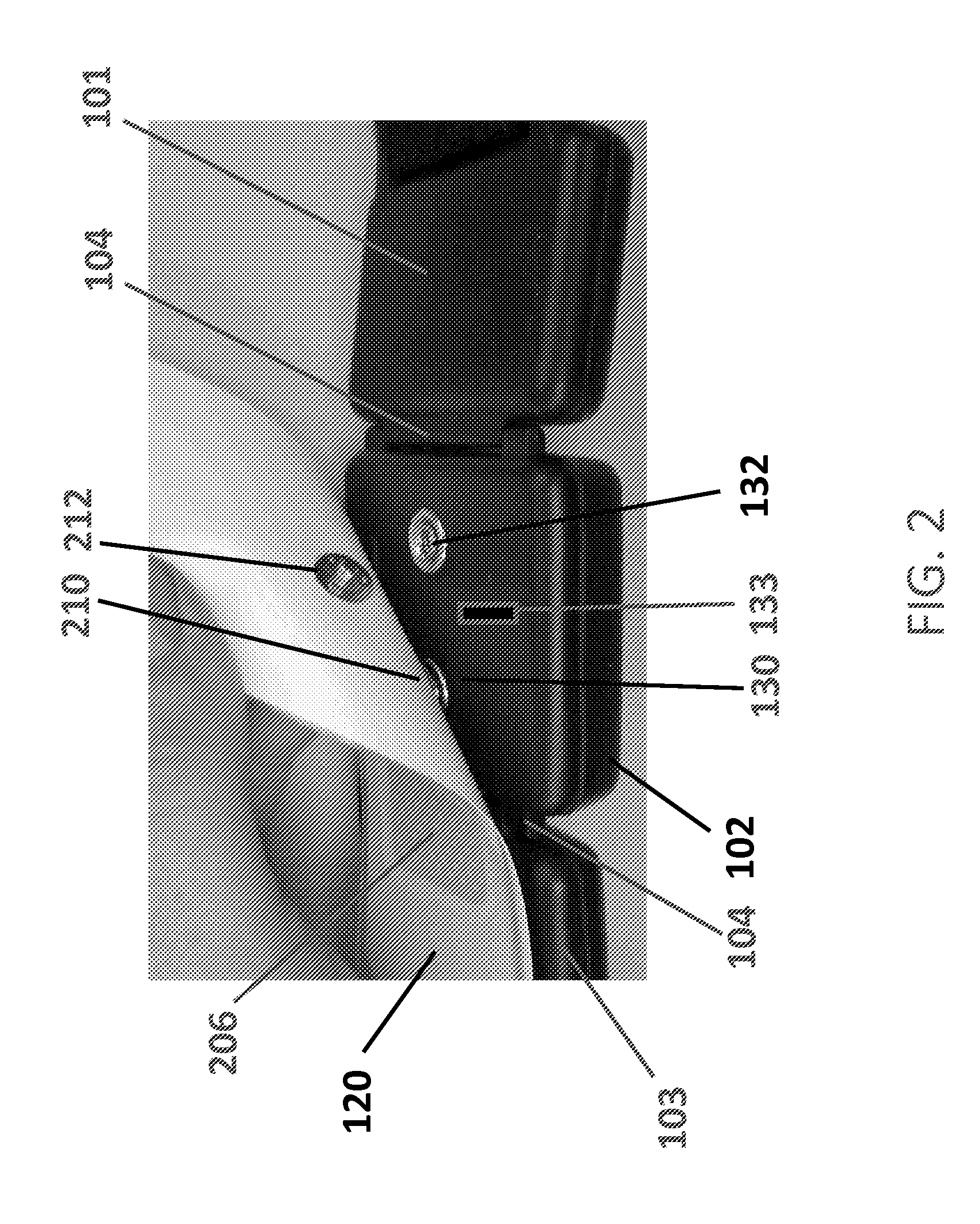Apparatus and method for relieving pain using transcutaneous electrical nerve stimulation
a technology of electrical nerve stimulation and electrode array, which is applied in the field of transcutaneous electrical nerve stimulation (tens), can solve the problems of severe and debilitating neuropathic pain, amputation of foot ulcers, and loss of sensation, and achieves the effects of minimizing interference with the patient's normal daily activities, maximizing effectiveness and usability, and facilitating and rapid clinical validation of electrode array placemen
- Summary
- Abstract
- Description
- Claims
- Application Information
AI Technical Summary
Benefits of technology
Problems solved by technology
Method used
Image
Examples
Embodiment Construction
[0064]Looking first at FIG. 1, there is shown a novel TENS apparatus 100 which comprises one preferred form of the present invention. TENS apparatus 100 generally comprises three components: a stimulator 105, a strap 110, and an electrode array 120.
[0065]Stimulator 105 comprises three mechanically and electrically inter-connected compartments 101, 102, and 103. Compartments 101, 102, 103 are inter-connected by hinge mechanisms 104, thereby allowing TENS assembly 100 to conform to the curved anatomy of a user's leg. In the preferred embodiment, compartment 102 contains stimulation hardware (except for a battery) and user interface elements 106, 108. In the preferred embodiment, compartments 101 and 103 are smaller, auxiliary compartments that house a battery for powering the stimulation hardware and other ancillary elements.
[0066]As shown in FIG. 2, electrode array 120 comprises electrical contacts 210, 212 that snap into mating ports 130, 132 provided on the underside of central sti...
PUM
 Login to View More
Login to View More Abstract
Description
Claims
Application Information
 Login to View More
Login to View More - R&D
- Intellectual Property
- Life Sciences
- Materials
- Tech Scout
- Unparalleled Data Quality
- Higher Quality Content
- 60% Fewer Hallucinations
Browse by: Latest US Patents, China's latest patents, Technical Efficacy Thesaurus, Application Domain, Technology Topic, Popular Technical Reports.
© 2025 PatSnap. All rights reserved.Legal|Privacy policy|Modern Slavery Act Transparency Statement|Sitemap|About US| Contact US: help@patsnap.com



